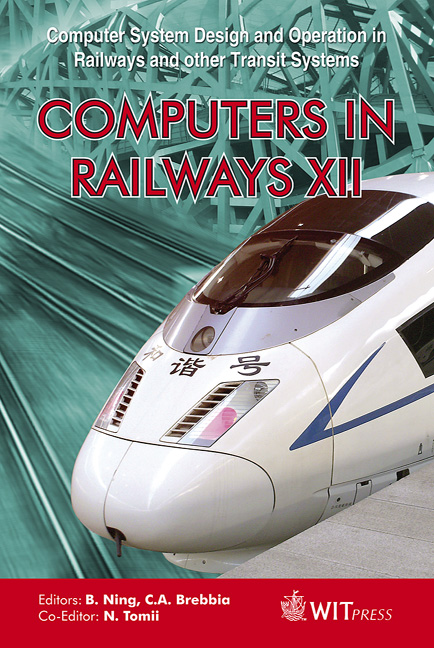Development And Implementation Of New Principles And Systems For Train Traffic Control In Sweden
Price
Free (open access)
Transaction
Volume
114
Pages
10
Page Range
441 - 450
Published
2010
Size
545 kb
Paper DOI
10.2495/CR100411
Copyright
WIT Press
Author(s)
B. Sandblad, A. W. Andersson, A. Kauppi & G. Isaksson-Lutteman
Abstract
The trend towards higher speed, more frequent traffic and many traffic operators requires new strategies and solutions for efficient train traffic control and utilization of track capacity. Operative control is today focused on controlling the infrastructure. In earlier research we have shifted the control paradigm from today’s technology oriented into a more traffic oriented one. This is done by real-time re-planning. The continuously updated traffic plan is normally executed by automated systems. After tests and evaluation in a simulated laboratory environment, the Swedish Rail Administration (Banverket) decided to develop and deploy an operative system to be installed at a traffic control centre. This system, called STEG, implements the main research results. Features of the new system are a dynamic planning view in form of a time-distance graph, decision support that helps the controller to identify disturbances and conflicts and automatic systems for execution of the traffic plan. The traffic controller can re-plan traffic (time aspects, track usage) via direct manipulation of the graph lines in the interface. Track maintenance and other activities can also be planned. The system automatically calculates all consequences of the changes and shows the effects on all trains within the actual time-distance space. A very careful process has been used to go from research results and prototypes to a fully operational system. The process has been very user centred and numerous iterations have been performed. Through this elaborate work, we have been able to ensure that the intentions of the prototypes have been correctly implemented in the final product. Keywords: train traffic control, dispatching, traffic planning, user interfaces, automatic execution.
Keywords
train traffic control, dispatching, traffic planning, user interfaces, automatic execution





